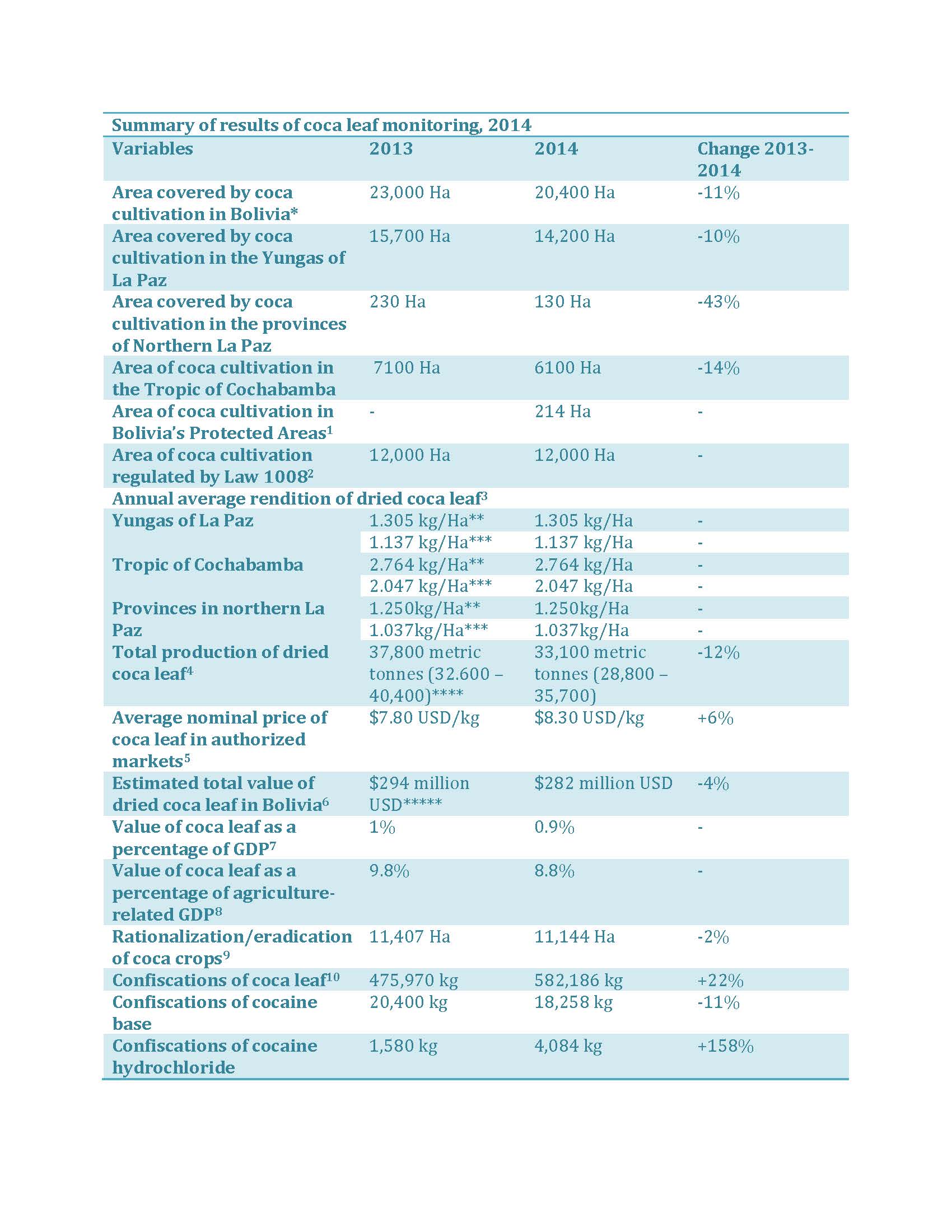The United Nations Office on Drugs and Crime today released their latest figures for coca cultivation in Bolivia, showing a reduction in overall cultivation. The figures also reveal that the price of dried coca leaf has gone up, as have confiscations of cocaine. Our translation of the UNODC report follows. It can be viewed as a pdf here: UNODC BOLIVIA Coca monitoring results-August 2015

*Quantification of coca leaf cultivation based on visual interpretation of high resolution satellite images.
**Yield factor from studies carried out in 1993 (DEA) and 2005 (UNODC) determined as upper limits in the current report.
***Yield factor from ‘Study of Average Coca Leaf Cultivation in Bolivia’(EPMHC-‐B), carried out between 2008-‐2011, determined as lower limits for the current
report.
****Estimated potential production of coca leaf in 2013 to compare with 2014.
***** Product of multiplying total production of dried coca leaf by nominal price in
authorized markets.
FOOTNOTES
1. In the 2013 Coca Monitoring Report Polygon 7 was the border within the Territorio Indígena and Isiboro Securé National Park. In 2014 the Red Line in Carrasco National Park was used as the border. For this reason, the area of coca cultivation between 2013 and 2-14 is not comparable. The cultivation areas not quantified within protected areas due to the new delimitation form part of coca cultivation at national level.
2. Law 1008 Regulations on the Regime for Coca and Controlled Substances, Supreme Decree 22099, 1988.
3. Yield calculations are based on studies conducted by the DEA in 1993, UNODC in 2005 and ‘Median Coca leaf Production in Bolivia’ carried out in 2010.
4. Potential production of dried coca leaf in the Tropic of Cochabamba [Chapare] and the provinces in northern La Paz was calculated through a brief estimate between the upper and lower limits of annual rendition, and for the Yungas of La Paz, production was estimated using the upper limit.
5. Calculation based on information provided by the Dirección General de la Hoja de Coca e Industrialización (DIGCOIN).
6. This value was calculated using the nominal legal market price for coca leaf in Bolivia.
7. Value calculated from the national GDP of 2013 and 2014, of 30.4 billion USD and 32.8 billion USD respectively.
8. Value calculated from the agricultural GDPs of 2013 and 2014, of 3.0 billion USD and 3.2 billion USD respectively
9. Information provided by the Vice Ministry of Social Defense and Controlled Substances (VDSSC) through ‘Tte. Goronda’, CEO, Strategic Operational Command.
10. The Special Force for the Fight Against Drug Trafficking (FELCN) is responsible for confiscations of coca leaf, cocaine base, cocaine chlorohydrate and chemicals destined for use in drug trafficking.
